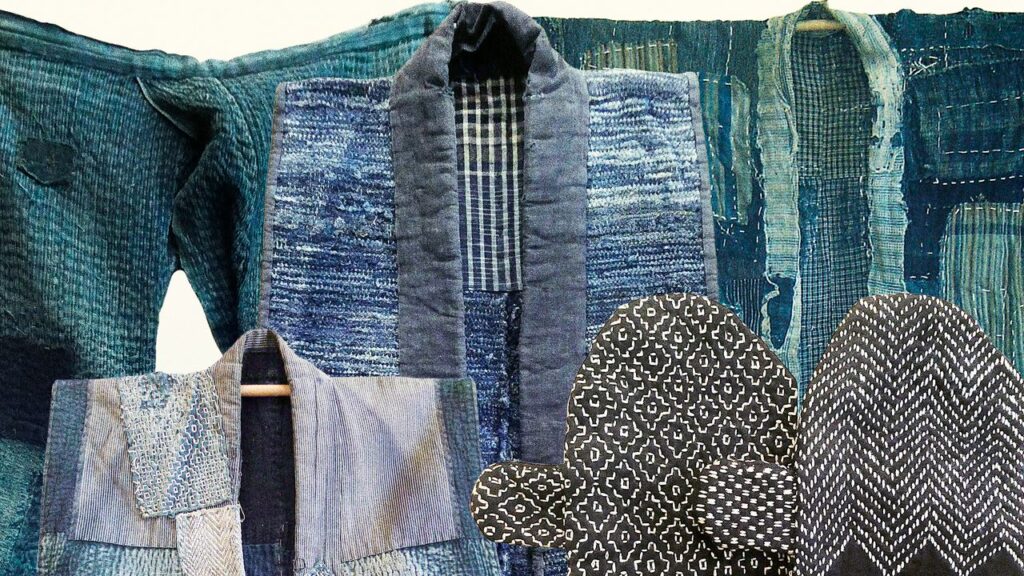When most people think of a vintage gem, they’ll probably picture a pair of ’60s redline Levi’s or a ’90s Stussy varsity jacket. The grails that Stephen Szczepanek (pronounced suh-PAN-eck) deals in, however, are significantly older and more esoteric. At Sri, Szczepanek’s Brooklyn showroom, many of the Japanese robes, trousers, accessories, and textiles on display were made a century ago or more, with some dating to the late 1800s.
His collection—which is heavy on boro patchwork, indigo dye, and sashiko embroidery—is the result of a decades-long passion for the everyday garments worn by farmers and laborers in pre-war Japan. Artfully faded and painstakingly mended, Szczepanek’s favorite pieces embody wabi-sabi, the Japanese concept of beauty that comes with age. “It’s a recognition that time has left its trace, and some new form of beauty has evolved from that,” he says.
Szczepanek doesn’t have much interest in fashion, but he’s nonetheless become a go-to for designers from the likes of Ralph Lauren, Visvim, and Calvin Klein in search of vintage inspo. Likewise, he sees the influence of traditional Japanese garments in the collections of some of the world’s most celebrated designers. “If you put some of these garments on, you’ll see that they don’t drape on the shoulders—they might stick out. And what you start thinking is, Oh, that’s Issey Miyake,” he says. “Or the way two subtle fabrics are joined together: Oh, that’s Yohji.” Szczepanek’s collection, which he’s built via a closely-guarded network of veteran pickers on twice-yearly trips to Japan, is always evolving, but he agreed to take us through a few of his current favorites.
19th-Century Cotton Kimono
“This kimono probably dates to the late 19th or early 20th century, and it’s shown inside-out, because that’s usually where you see most of the patching and mending. Cotton was in short supply in Japan, and regular people couldn’t really afford it, so they would buy used pieces or they would buy rags and make clothes out of them. So that’s why you see so much patching going on, because people just had to, and everybody did it all over Japan.”
Courtesy of Sri
1930s Boro Jacket
“This is a classic form that was worn for work, but calling it a chore coat makes it sound like you have lots of decisions, like, ‘Maybe I’ll wear this today.’ This was probably their only garment, or one of a few. It was made for work, but work and life were indistinguishable, so it would have been worn all the time.”


